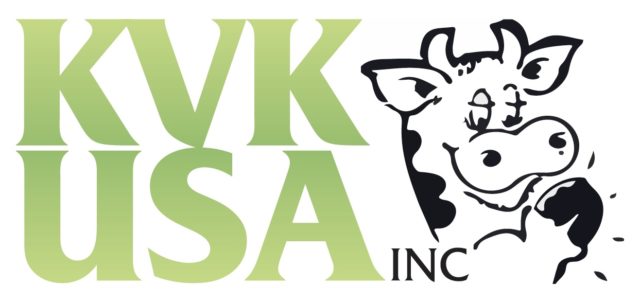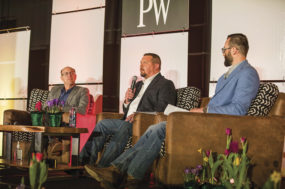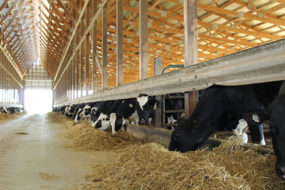Producers attending World Ag Expo may be interested in one or more of 19 dairy seminars to be held during the show Feb. 9-11. Dairy seminars will be held in Trailer 1 at the show’s seminar center, which will be located near the southeast corner of the grounds at Gate 16.
TUESDAY, FEB. 9
9:30 a.m.
Fodder – Animal nutrition is no longer cut and dried
Curt Chittock, Simply Country Inc.
An introduction to using sprouted grains for livestock feed. In addition to basic feeding guidelines and information, learn details on how to grow fodder on a large scale. Fully automatic fodder systems are brand-new to the market and will require some education on how they work and why dairies need them.
10:30 a.m.
Benefits and limitations of bunker silos and silage management to avoid dm losses
Brian Holmes, professor emeritus, University of Wisconsin – Madison
Brian Holmes will be presenting on the advantages and disadvantages of bunker silos and piles, two common forms of silage storage. He will also present some important information on why effective silage management is critical to dairy success.
11:30 a.m.
Timely diagnosis of ketosis and other metabolic diseases in dairy cows
Aurora Villarroel, Afimilk Ltd.
Metabolic disease is one of the most costly problems in dairy farms, partly due to the high prevalence and partly due to the existence of many subclinical cases that cannot be detected by simply observing the cow.
Different tests can be used to detect subclinical ketosis, for example, but they require designing a good protocol to ensure cows are tested when they are most susceptible to the disease. Alternatively, in-line devices that constantly monitor can be used, and the information provided by them must be interpreted.
1:30 p.m.
Integrated solutions and dairy automation trends over the next 15 years
Mark Futcher, DeLaval Inc.
Global forces, consumer demands and technology will change the dairy landscape over the next 15 years. As producers strive to increase efficiencies and productivity, the development and use of automation will no doubt increase proportionately.
With a long history of improving the output of other industries, automation is the key that will help producers do more with less. During this session, attendees will learn of tools and likely development trends going forward which will help them face a rapidly changing future.
2:30 p.m.
Removal of phosphorus from manure with decanter centrifuge
Joshua J. Gable, Centrisys
Excessive introduction of phosphorus is a pressing water quality concern across the world. Regulators are increasingly looking into ways to address the emissions from agricultural sectors, especially for large-scale confined animal feeding operations. In this seminar, we will present a summary of full-scale field tests conducted at dairy farms in the Midwest.
The expected performance, economic analysis and challenges of introducing decanter centrifuges into manure treatment will also be discussed.
3:30 p.m.
How California dairies can rise to the call of the water crisis and the future of manure management
Ross Thurston, Livestock Water Recycling
Direct and indirect water usage at dairies in the state of California results in approximately 85 gallons per cow each day being extracted from depleted groundwater. Manure can now be considered a resource absolutely vital to the long-term viability of California dairies.
This seminar will discuss how a technological approach to segregating, concentrating and stabilizing manure nutrients, including the valuable water containing them, can improve operating profit margins, reduce the number of trucks on local roads, reduce field compaction and protect the environment.
WEDNESDAY, FEB. 10
10 a.m.
Maximizing the value of genetics in the genomic era
Kevin Jorgenson, All West Select Sires
Kevin Jorgenson grew up on a Wisconsin dairy farm and is a graduate of the University of Wisconsin – Madison. With an MBA, he’s spent his career in A.I. working as an evaluator, mating specialist and program director. He owns cattle and also works cattle auctions as a pedigree announcer and ring man. He’s been a sire analyst working in the Western states since 2014.
11 a.m.
Full-throttle genetic improvement
Paul Loney, TransOva Genetics
Paul Loney has spent his career in the dairy industry, formerly with Zoetis, working with large-herd producers across the country. His presentation will focus on the new technologies available to dairymen to rapidly improve the genetic value of their herds on the female side of the equation.
Noon
Genetics and repro at RuAnn & Maddox Dairies: Achieving goals
Pat Maddox, Ruann & Maddox Dairies
A longtime managing partner in this family operation, Pat oversees the breeding program on these two dairies while milking 4,300 cows. Along with dry cows and replacement heifers, the herds total 13,000 head.
With high-production and repro efficiency, the dairies have on-site ET vets and have maximized genetic progress while merchandising cattle and embryos in the U.S. and internationally.
1 p.m.
The impact of genomics on reproduction and other low-heritability traits
Dr. Ralph Bruno, Zoetis
Based in California, Dr. Bruno is a veterinarian with expertise in both the physiology and genetics of reproduction as well as nutrition, herd health and dairy records analysis. He had an extension appointment at Texas A&M and was on staff at UC – Davis before taking his current post working with herds throughout California and the West.
2 p.m.
Tools for building tomorrow’s super-cow
Lindsey Worden, Holstein Association USA
Lindsey Worden, who was raised on her family’s dairies in New York and New Mexico, has a degree from the University of Wisconsin – Madison, where she was on the dairy judging team. Based at the association’s office in Vermont, she was project manager for the collaboration with Zoetis in the development of the Enlight genetic management tool. She oversees genomic and genetic programs and software.
THURSDAY, FEB. 11
9:30 a.m.
Evaluation of a biofilter treating a San Joaquin Valley dairy’s lagoon water
Mai Ann Healy, BioFiltro USA Inc. and Joe Mullinax, Denele Analytical Inc.
For approximately one year, a BIDA biological wastewater treatment system has been operating at a commercial dairy in Hilmar, California. The system is being tested for its air, soil and water quality benefits as well as its economic feasibility for San Joaquin Valley dairies. An overview of the analysis of the first year of operation and monitoring will be discussed.
10 a.m.
Using composting to manage manure and improve the bottom line
Ryan Flaherty, Sustainable Conservation
Hear directly from a manure composter about tips and tricks for composting dairy manure. Topics will include how to get started composting on-site, equipment and labor requirements, what customers expect from manure compost and potential impacts to a producer’s bottom line.
10:30 a.m.
Dairy seminar drip irrigation of dairy forage crops utilizing dairy effluent
Dennis Hannaford and Todd Rinkenberger, Netafim USE
Drip irrigation is well accepted as an irrigation and production tool in many crops in California agriculture. As the focus continues on driving continued growth in water-use efficiency in forage crops plus the added value of utilizing the on-farm nutrients dairies produce, Netafim Irrigation has partnered with Sustainable Conservation and De Jager Dairies on an innovative SDI project that combines these two areas.
This presentation will speak to the results of the work completed to date, the system’s requirements and the management needed to be successful in this application.
11:10 a.m.
Seen and unseen benefits of strip-till in California dairy forage programs
Mike Peterson, ANP Inc.
If you’re a dairy producer seeking a more economical method to integrate smart water savings and reduce the time between winter crop to spring crop seedbed preparation time, this presentation is for you. Overworking fields for the next crop is hard on the soils.
Mike Peterson, lead agronomist for ANP Inc., will discuss the advantages of smart strip-tillage with an advanced fertility program which has proven to have a multitude of benefits, many of which deal with lower water demands and getting a crop rolling to maximize yield and quality.
Noon
The role of on-farm groundwater recharge in achieving a sustainable water future for California
Bob Curtis, Almond Board of California, Don Cameron, Terranova Ranch, and Daniel Mountjoy, Sustainable Conservation
As California grapples with its fourth year of severe drought, a number of questions have been raised around what, if anything, farmers are doing to help move California toward a sustainable water future in the face of shrinking water supplies and growing water demand.
Farmers, industry associations and water agencies in the San Joaquin Valley are stepping up to demonstrate that farmland can be used to capture flood runoff to recharge groundwater under the fields where the water is used. This presentation will focus on what is known about how to affordably capture flood water when it is available – without harming crops.
1 p.m.
Financial incentives for agricultural irrigation systems in California
Amrith Gunasekara and Carolyn Cook, California Department of Food and Agriculture, and Crystal Myers and Sarah Weaver, Office of Grants Administration
This presentation will focus on the State Water Efficiency and Enhancement Program (SWEEP). SWEEP is a California Department of Food and Agriculture (CDFA) program and provides financial incentives, up to $200,000, to growers to implement on-farm irrigation systems that reduce energy use resulting in greenhouse gas (GHG) emission reductions and water savings.
CDFA has financial resources for 2016 to provide financial incentives to agriculture operations for eligible projects. Funding criteria and project requirements will be discussed as well as the results of previously awarded SWEEP funds. SWEEP is funded through the Greenhouse Gas Reduction Fund referred to as the “California Climate Investments” program and is administered in cooperation with the department of water resources and the state Water Resources Control Board.
1:20 p.m.
NRCS conservation programs to assist animal feeding operations address water quality issues
Brook Gale, NRCS-California state nutrient management
This presentation will briefly discuss the NRCS role and approach to conserving water quality, as well as give an overview of common practices and cost-sharing programs available. Common hurdles and perceptions regarding the application, contracting and payment process will also be discussed.
2:00 p.m.
Precision irrigation and conservation agriculture
Jeff Mitchell, UC – Davis Department of Plant Sciences
Learn about increasing water-use efficiency and sustainably intensifying agriculture through significant, underutilized irrigation approaches, merging precision technologies such as overhead and drip with reduced-disturbance, high-residue production practices. Our work evaluates the coupling of these approaches in California.
2:40 p.m.
Seen and unseen benefits of strip-till in California dairy forage programs
Mike Peterson, ANP Inc.
If you’re a dairy producer seeking a more economical method to integrate smart water savings and reduce the time between winter crop to spring crop seedbed preparation time, this presentation is for you. Overworking fields for the next crop is hard on the soils.
Mike Peterson, lead agronomist for ANP Inc., will discuss the advantages of smart strip-tillage with an advanced fertility program which has proven to have a multitude of benefits, many of which deal with lower water demands and getting a crop rolling to maximize yield and quality. PD



